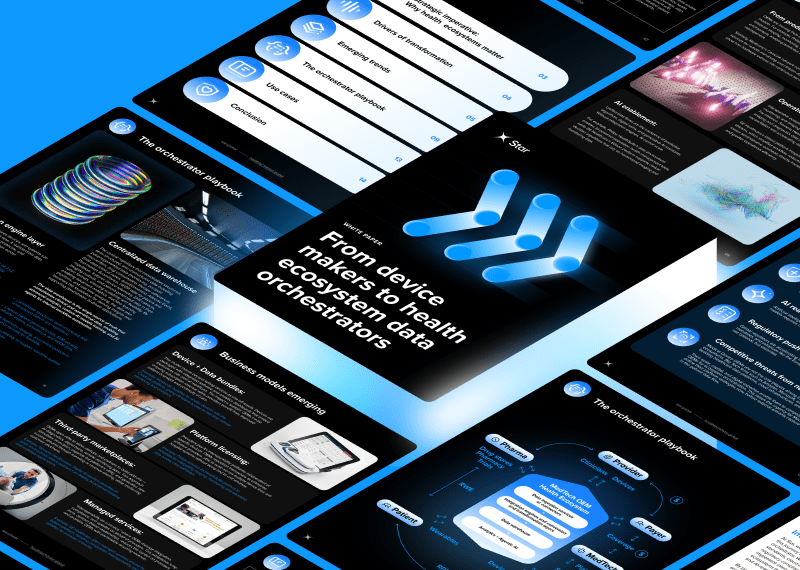The EU AI Act is one of the most talked-about pieces of legislation in the world of technology. It aims to ensure that AI and ML technologies are used safely and responsibly across the European Union. From a business perspective, the EU AI Act has profound implications, especially for sectors relying heavily on AI.
Star and BSI Group recently hosted a webinar focusing on the latest AI regulations, featuring two industry leaders as our guest speakers: Antonina Burlachenko, Head of Quality and Regulatory Consulting at Star, and Andrea Sanino, Senior AI Product Manager at BSI Group. Here is a short recap.
Key takeaways on EU AI Act, risks, and AI system classifications
Antonina Burlachenko provided an in-depth overview of the AI Act and ISO standards related to AI/ML products for AI-based products. She touched on different aspects, from the classification of AI-based products to severe penalties in place for noncompliance.
- AI systems classification: Antonina shed light on how AI systems are tiered based on their potential risks. Understanding these categories is crucial for businesses, especially when you consider the stringency of regulations tied to "high-risk" systems.
- High-risk classified AI products: Using real-world examples, Antonina helped break down what constitutes high-risk AI applications and their implications. For instance, an AI system making critical medical decisions, like diagnosing a rare disease based on medical imagery, falls under this classification.
- Penalties and prohibited practices: Avoiding noncompliance is crucial. Antonina emphasized the financial and reputational risks of failing to adhere to the Act. Using different scenarios, Antonina explained how certain breaches could impact businesses in sectors like financial services or automotive.
- Data governance: In an era where data fuels the majority of products, Antonina accentuated its proper handling and governance. This is pivotal in maintaining trust, especially in sectors that deal with sensitive data, like healthcare or banking.
Key insights on the EU Act timeline and notified bodies
Andrea Sanino discussed what the current AI Act timeline looks like, how to ensure efficient collaboration with a notified body, and the proper timing for engaging with them.
- EU AI Act timeline: Andrea provided clarity on the chronological steps the Act will undergo – from its proposal to potential implementation. The expected completion by 2024 means businesses have a limited window to prepare.
- Navigating high-risk AI products: Andrea highlighted the market entry pathways for high-risk AI products, explaining the complexities and potential roadblocks. This information is valuable for sectors that are likely to introduce AI products.
- The role of notified bodies: These entities are poised to play a pivotal role. Andrea detailed their significance and how they'll guide businesses in ensuring compliance, especially when navigating the maze of high-risk AI product regulations.
Other crucial areas covered during the webinar included:
- The ML System Life Cycle as specified by ISO/IEC 23053:2022.
- The World Health Organization's regulatory considerations for AI in health.
- An overview of the technical documentation required.
- A brief introduction to the relevant ML/AI ISO standards.
Preparing for the EU AI Act: the impact on business practices
For businesses operating in sectors like healthcare, financial services, automotive, and adtech the Act means they need to be prepared for more in-depth scrutiny of their AI-driven products. There's an increasing need for transparency, proper data governance, and robust quality and risk management systems.
The EU AI Act is not just about compliance; it's about setting a gold standard for AI practices worldwide. Given the projected global AI market value of over $390 billion by 2025, the EU AI Act could serve as a template for other regions aiming to instill trust and safety in AI adoption.
Equip yourself with the knowledge to navigate the evolving AI landscape. Access our webinar recording.









